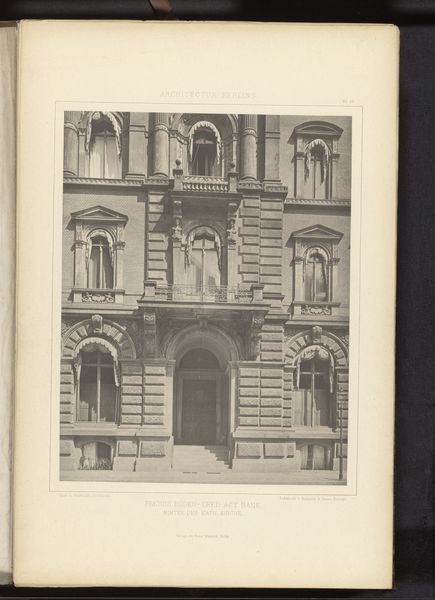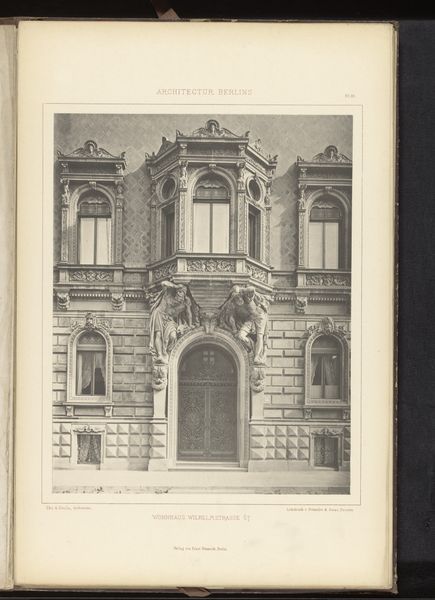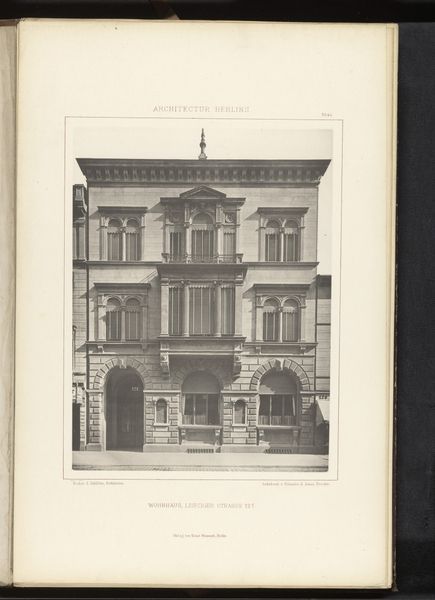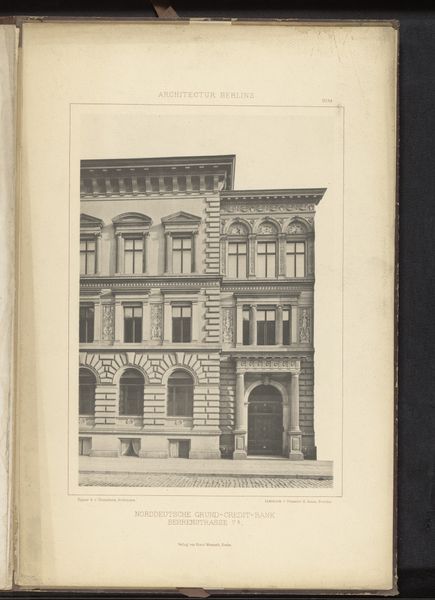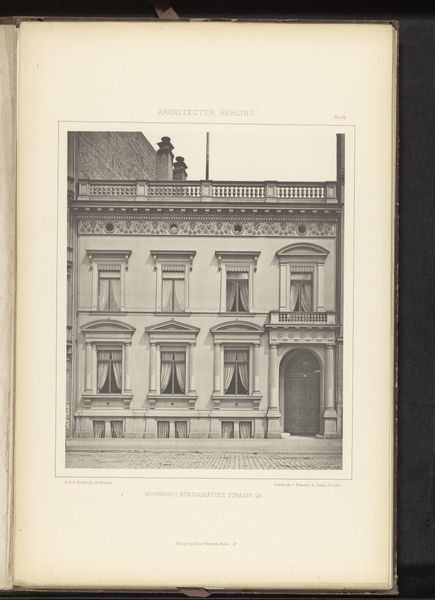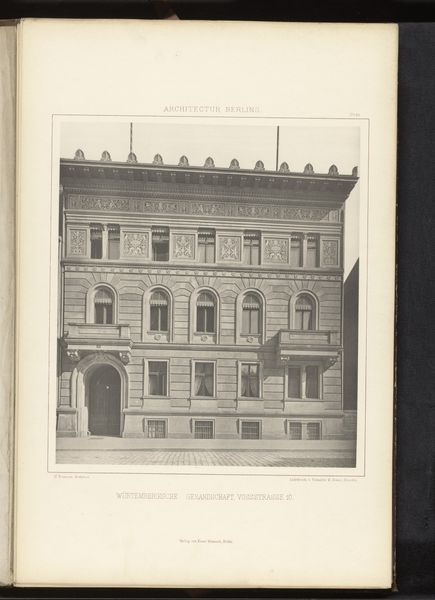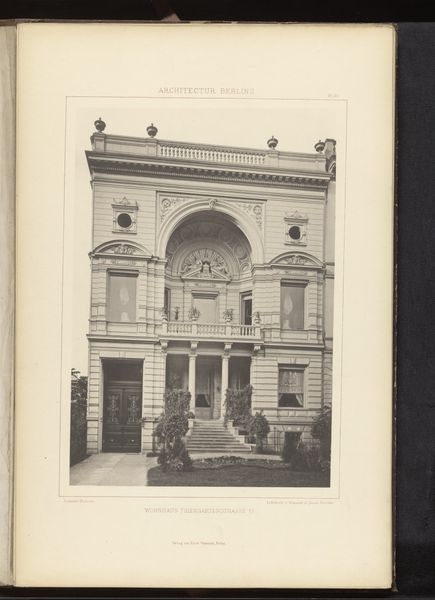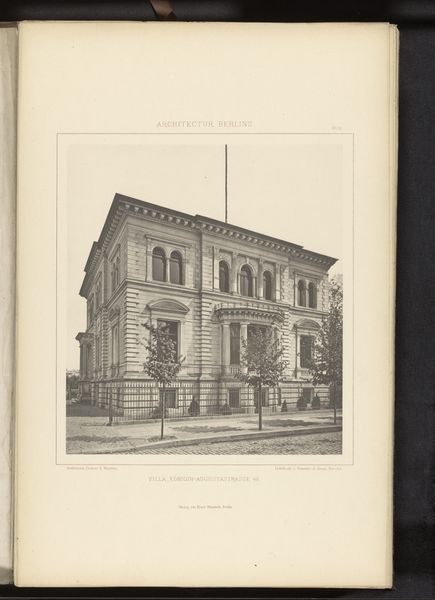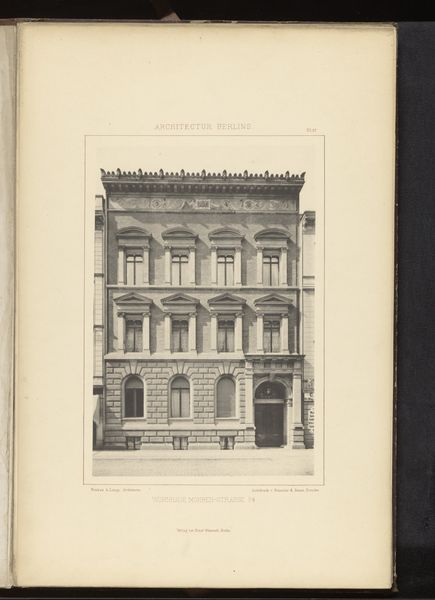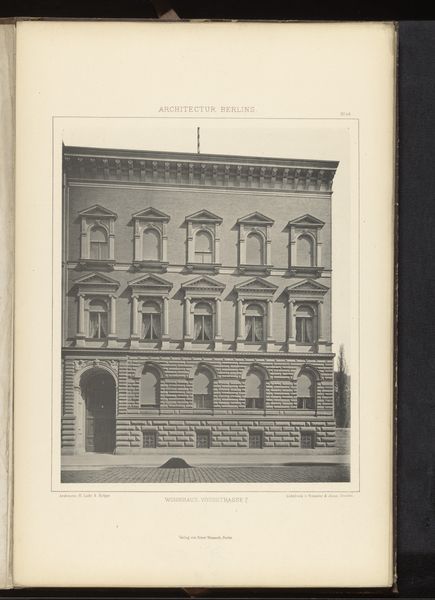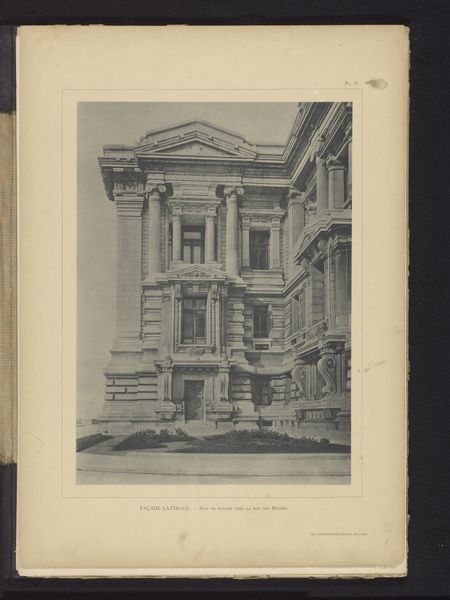
Gezicht op een woonhuis aan de Vossstrasse 19 in Berlijn, Duitsland before 1877
0:00
0:00
anonymous
Rijksmuseum
print, photography, engraving, architecture
# print
#
photography
#
cityscape
#
engraving
#
architecture
#
realism
Dimensions: height 325 mm, width 226 mm
Copyright: Rijks Museum: Open Domain
Editor: Here we have an image entitled 'Gezicht op een woonhuis aan de Vossstrasse 19 in Berlijn, Duitsland' which roughly translates to "View of a house on Vossstrasse 19 in Berlin, Germany." The work is dated to before 1877, made by an anonymous artist, using photography, print, and engraving techniques, among other media. Looking at this, I find myself pondering the relationship between power, representation, and architecture, particularly through its depiction of wealth and status through realism. How would you interpret this work? Curator: It's compelling how this seemingly straightforward architectural depiction intersects with notions of social hierarchy and power structures prevalent in late 19th-century Berlin. Vossstrasse itself was an emerging address for the wealthy, reflecting the aspirations of the rising bourgeois. What is striking is how an image can become a record, intentional or not, of urban development rooted in class disparity. The architecture doesn't simply offer shelter; it becomes a bold proclamation of social standing. What do you think about the way the realism style may affect this interpretation? Editor: That’s an interesting point. The stark realism, almost clinical in its depiction, amplifies the statement about social stratification. Instead of idealizing or romanticizing the building, we are confronted with an unvarnished image of material wealth. The level of detail almost feels like an endorsement, normalising this display of privilege, as it lacks critical commentary. Curator: Precisely. It's a reminder that what is included, what is excluded, and *how* it is presented reinforces or challenges established power dynamics. Considering that this was created before 1877, and thus before the intense urban restructuring in the late 19th and early 20th centuries, what possibilities of the urban poor being included or not does this imagery present? Editor: The house looks oddly isolated. Thinking about the lives of those who would have worked and lived around it versus those living inside presents a compelling perspective. It certainly adds another dimension to the work. Curator: Exactly, seeing urban spaces, not just as architectural entities but as sites of continuous negotiation involving different groups is crucial. It has truly opened my eyes as to the complexities involved with realist urban portraits.
Comments
No comments
Be the first to comment and join the conversation on the ultimate creative platform.
